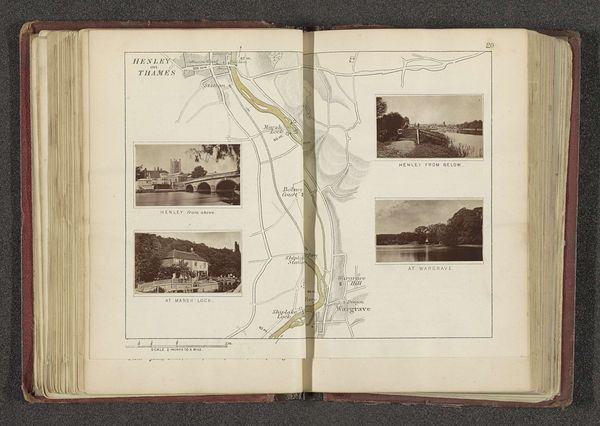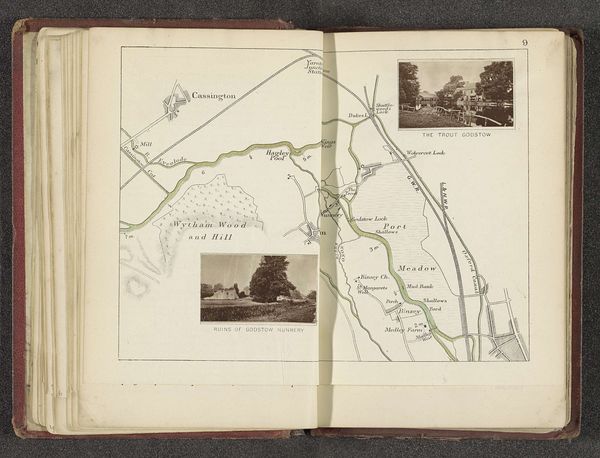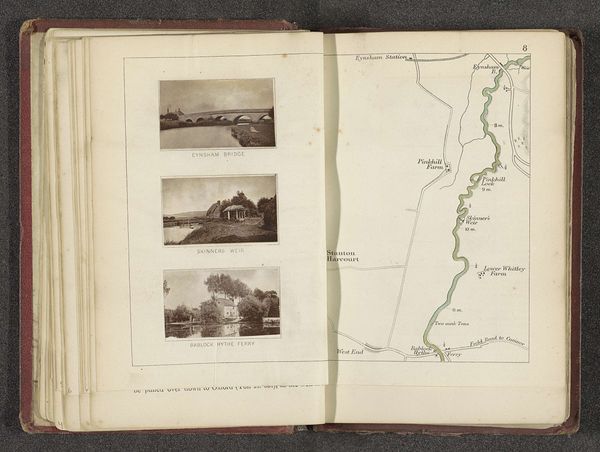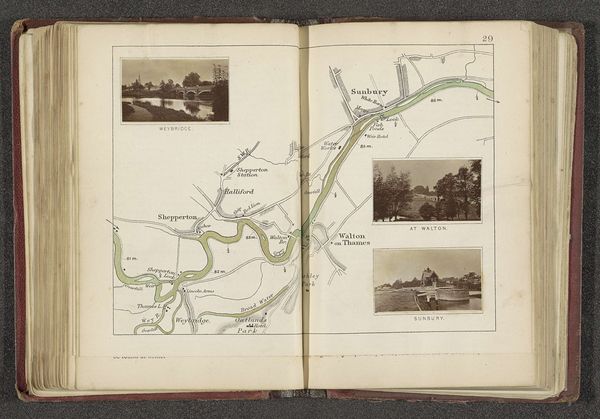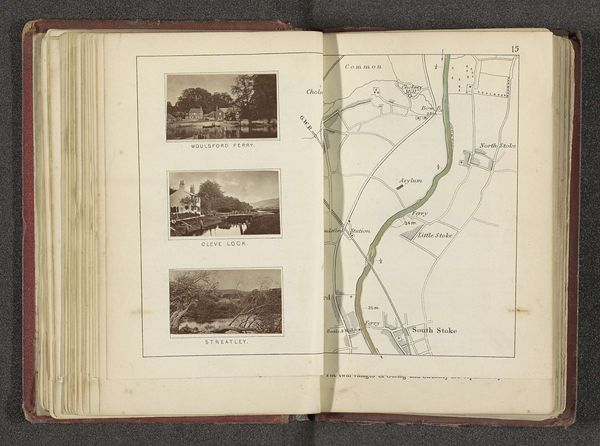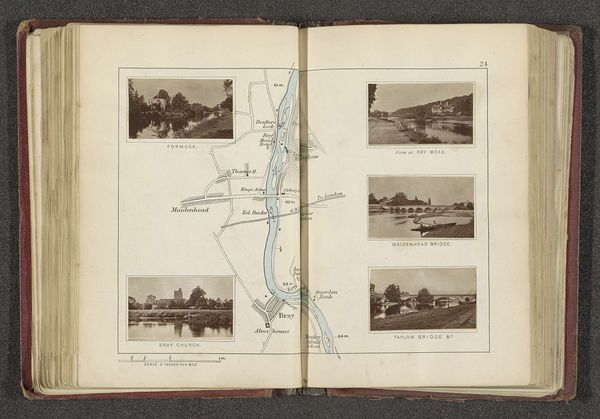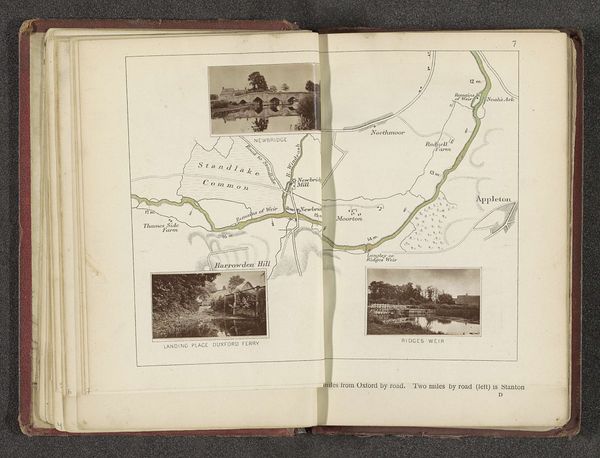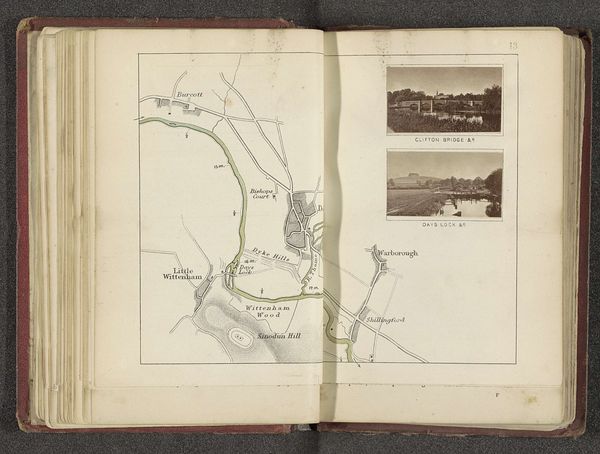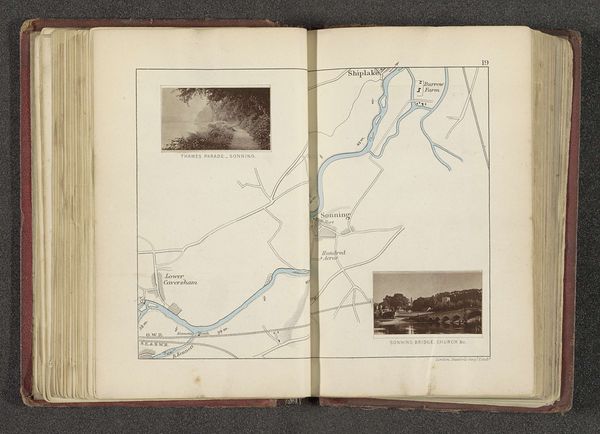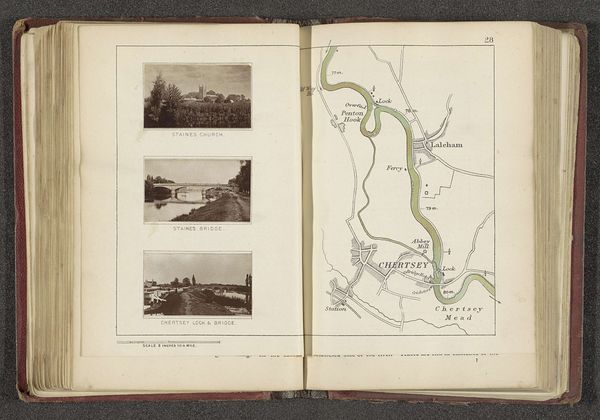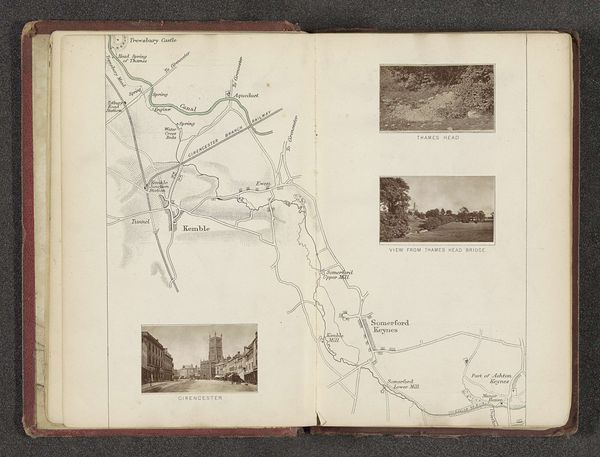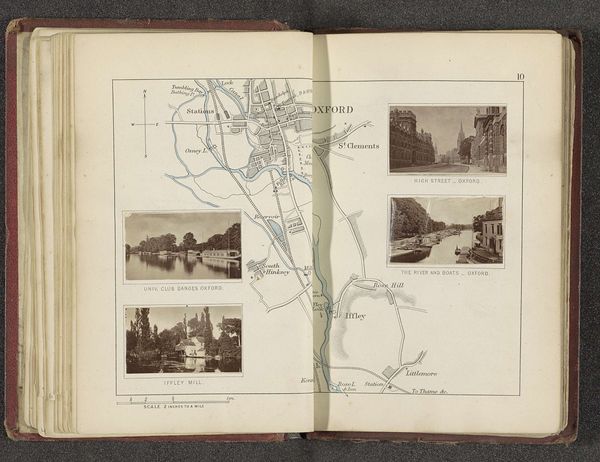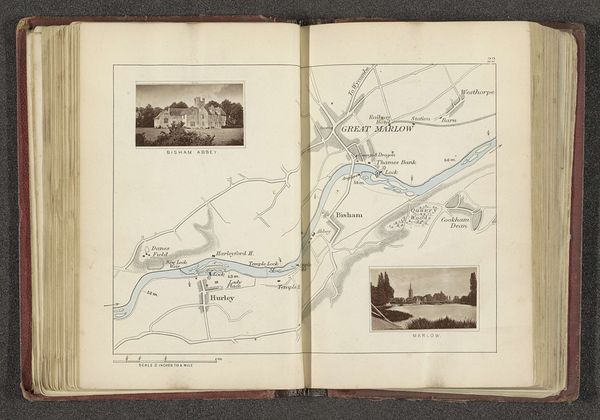
drawing, print, etching, paper, photography
#
drawing
# print
#
etching
#
landscape
#
river
#
paper
#
photography
#
coloured pencil
#
cityscape
#
watercolor
Dimensions: height 162 mm, width 232 mm
Copyright: Rijks Museum: Open Domain
Editor: This is "Kaart met drie afbeeldingen van plaatsen langs de Theems," or "Map with Three Images of Places Along the Thames," dating from before 1879, created by Henry W. Taunt. It combines drawings, etchings, and photography on paper. I find it interesting how different forms of visual representation are juxtaposed. What kind of conversation do you think it is having with the viewer? Curator: This map embodies the layering of time and perception. Look closely: We have, on one side, photographic moments frozen in sepia tones—testaments to specific places at a specific time. And on the other, a hand-drawn map, less concerned with photographic truth, but more with symbolic relationships between these locations, mapping a lived experience of the Thames. Do you notice the contrast in how each side depicts reality? Editor: I do see that, and it almost feels like a conversation between objective observation and subjective interpretation. The photos feel more immediate and representational. The map seems to provide a broader, contextual understanding. Curator: Precisely! This contrast reveals much about how we engage with places. Taunt isn't simply documenting the Thames; he's crafting a visual memory. The photographic images evoke a sense of nostalgia, while the map encourages us to trace paths, imagine journeys, and understand the spatial connections between these landmarks. This invites a psychological and perhaps emotional cartography, a personal relationship with the depicted areas. How does this relationship inform how we consider photography and mapping? Editor: So, it's not just about geographical accuracy, but about how we remember and relate to a place through different lenses – the immediate captured moment versus a more conceptual, almost imagined, landscape. I guess I'll have to keep in mind these diverse approaches in my own art and research. Curator: Indeed. Memory itself is layered like this image, fragmented and reorganized over time.
Comments
No comments
Be the first to comment and join the conversation on the ultimate creative platform.

